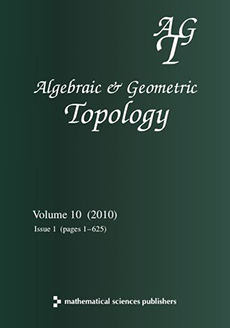Abstract
Bott and Taubes constructed knot invariants by integrating differential forms along the fiber of a bundle over the space of knots, generalizing the Gauss linking integral. Their techniques were later used to construct real cohomology classes in spaces of knots and links in higher-dimensional Euclidean spaces. In previous work, we constructed cohomology classes in knot spaces with arbitrary coefficients by integrating via a Pontrjagin–Thom construction. We carry out a similar construction over the space of string links, but with a refinement in which configuration spaces are glued together according to the combinatorics of weight systems. This gluing is somewhat similar to work of Kuperberg and Thurston. We use a formula of Mellor for weight systems of Milnor invariants, and we thus recover the Milnor triple linking number for string links, which is in some sense the simplest interesting example of a class obtained by this gluing refinement of our previous methods. Along the way, we find a description of this triple linking number as a degree of a map from the 6–sphere to a quotient of the product of three 2–spheres.
Citation
Robin Koytcheff. "The Milnor triple linking number of string links by cut-and-paste topology." Algebr. Geom. Topol. 14 (2) 1205 - 1247, 2014. https://doi.org/10.2140/agt.2014.14.1205
Information





